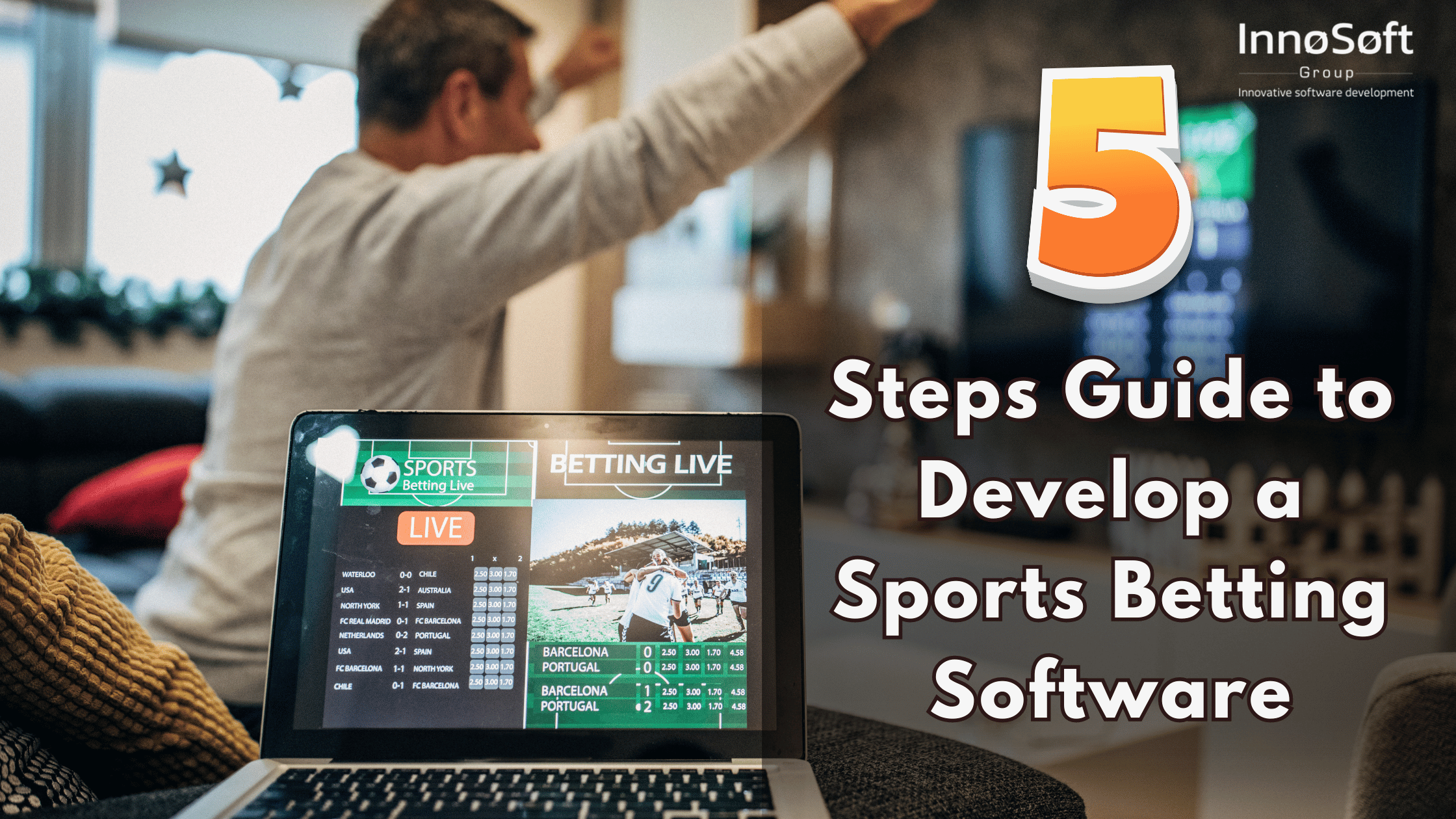The sports betting industry is experiencing rapid growth, driven by the rising interest in sports and the availability of online platforms. As a result, there is a significant demand for sports betting software development. If you are considering creating a sports betting application, it is important to have a thorough understanding of the development process. This guide offers a detailed breakdown of sports betting software development, outlining five key steps to help you navigate this complex and competitive industry.
What is Betting Software Development?
Betting software development refers to the creation of applications or platforms that allow users to place bets on various sports events. These platforms can range from simple mobile apps to complex web-based systems with numerous features, accommodating everything from traditional bets to live betting. The development process involves several stages, including planning, designing, coding, testing, and deployment, each requiring specialized knowledge and expertise.
Importance of Betting Software in Today’s Market
The advent of digital technology has revolutionized the sports betting industry, transforming it from a niche market into a global phenomenon. Modern betting software not only provides a seamless betting experience but also ensures secure transactions, real-time updates, and user-friendly interfaces. This has attracted a wider audience, leading to increased revenue opportunities for businesses.
Key Features of Sports Betting Software
To create a successful sports betting application, it is essential to integrate key features that cater to the needs and preferences of users. Here are some fundamental features that should be included:
1. User-Friendly Interface
A simple and intuitive user interface is crucial for retaining users. The design should be easy to navigate, allowing users to place bets with minimal effort. Clear graphics, straightforward menus, and a seamless betting process enhance the user experience.
2. Real-Time Data and Live Betting
Providing real-time data on sports events and odds is essential for any sports betting platform. Live betting features allow users to place bets during the event, which adds excitement and engagement. This requires robust backend systems that can handle real-time data processing.
3. Multiple Payment Options
Offering a variety of payment methods, including credit/debit cards, e-wallets, and cryptocurrencies, caters to a broader audience. Secure and swift transactions build trust and encourage more users to engage with the platform.
4. Security Measures
Ensuring the security of users’ personal and financial information is paramount. Implementing advanced security measures such as SSL encryption, two-factor authentication, and secure payment gateways helps protect against fraud and cyber threats.
5. Odds Management
Effective odds management is critical for balancing the betting activity and ensuring profitability. The software should include tools for setting, updating, and managing odds based on real-time data and statistical analysis.
6. Customer Support
Providing excellent customer support enhances user satisfaction and loyalty. Features like live chat, email support, and comprehensive FAQs help users resolve issues quickly and efficiently.
7. Mobile Compatibility
With the increasing use of mobile devices, ensuring that your betting software is mobile-friendly is essential. Developing a responsive web design or a dedicated mobile app can significantly enhance user accessibility and convenience.
The 5-Step Guide to Sports Betting Software Development
Now that we have an understanding of what betting software entails and its key features, let’s delve into the five essential steps involved in the development process.
Step 1: Market Research and Planning
Before embarking on the development journey, thorough market research is essential. This involves understanding the target audience, analyzing competitors, and identifying market trends. Key considerations include:
- Identifying Target Audience: Determine the demographics, preferences, and behaviors of potential users.
- Competitor Analysis: Analyze existing sports betting platforms to identify their strengths and weaknesses.
- Regulatory Compliance: Ensure that your software complies with legal regulations and licensing requirements in different jurisdictions.
Planning is a critical phase where you outline the project’s scope, objectives, and timelines. It involves:
- Defining Goals: Set clear, achievable goals for your betting software.
- Budgeting: Estimate the cost of development, including technology, resources, and marketing.
- Resource Allocation: Assign roles and responsibilities to team members, ensuring that you have the necessary expertise.
Step 2: Designing the Software
The design phase involves creating the visual and functional aspects of the betting software. This includes:
- User Interface (UI) Design: Create wireframes and prototypes to visualize the layout and design of the application. Focus on simplicity, ease of use, and aesthetic appeal.
- User Experience (UX) Design: Ensure that the user journey is smooth and intuitive. Test different design elements to optimize the user experience.
Also Read: Top 15 Sports Betting Software Development Companies 2024–25
Step 3: Development
This phase involves the actual coding and programming of the software. It includes:
- Backend Development: Develop the server-side components, including databases, APIs, and core functionalities.
- Frontend Development: Create the client-side components that users interact with, ensuring that the design is responsive and compatible across devices.
- Integration: Integrate third-party services such as payment gateways, data feeds, and security measures.
Step 4: Testing
Testing is a crucial step to ensure the software functions correctly and meets quality standards. It involves:
- Functional Testing: Verify that all features and functionalities work as intended.
- Performance Testing: Assess the software’s performance under different conditions, including load and stress testing.
- Security Testing: Identify and fix vulnerabilities to protect against security threats.
- User Acceptance Testing (UAT): Involve real users in testing to gather feedback and make necessary improvements.
Step 5: Deployment and Maintenance
Once the software has passed all testing phases, it is ready for deployment. This involves:
- Launch: Deploy the software to a live environment, ensuring that all systems are operational.
- Monitoring: Continuously monitor the software for performance issues and user feedback.
- Maintenance: Regularly update the software to fix bugs, add new features, and improve performance.
Challenges in Sports Betting Software Development
Developing sports betting software is not without its challenges. Some common obstacles include:
1. Regulatory Compliance
Navigating the complex web of regulations in different regions can be challenging. Ensuring compliance with local laws and obtaining necessary licenses is crucial.
2. Security Concerns
Protecting user data and ensuring secure transactions are paramount. This requires implementing robust security measures and staying updated with the latest cybersecurity trends.
3. Real-Time Data Management
Handling real-time data and providing accurate updates is essential for live betting. This requires advanced data processing capabilities and reliable data sources.
4. Competition
The sports betting market is highly competitive, with numerous players vying for user attention. Differentiating your software through unique features and superior user experience is essential for success.
Conclusion
Sports betting software development is a complex but rewarding endeavor. By following the five-step guide—market research and planning, designing, development, testing, and deployment—you can create a robust and user-friendly betting platform. Integrating key features such as a user-friendly interface, real-time data, multiple payment options, security measures, odds management, customer support, and mobile compatibility will enhance the user experience and ensure the success of your software. Despite the challenges, the potential rewards make it a worthwhile investment for businesses looking to tap into the lucrative sports betting market.














































